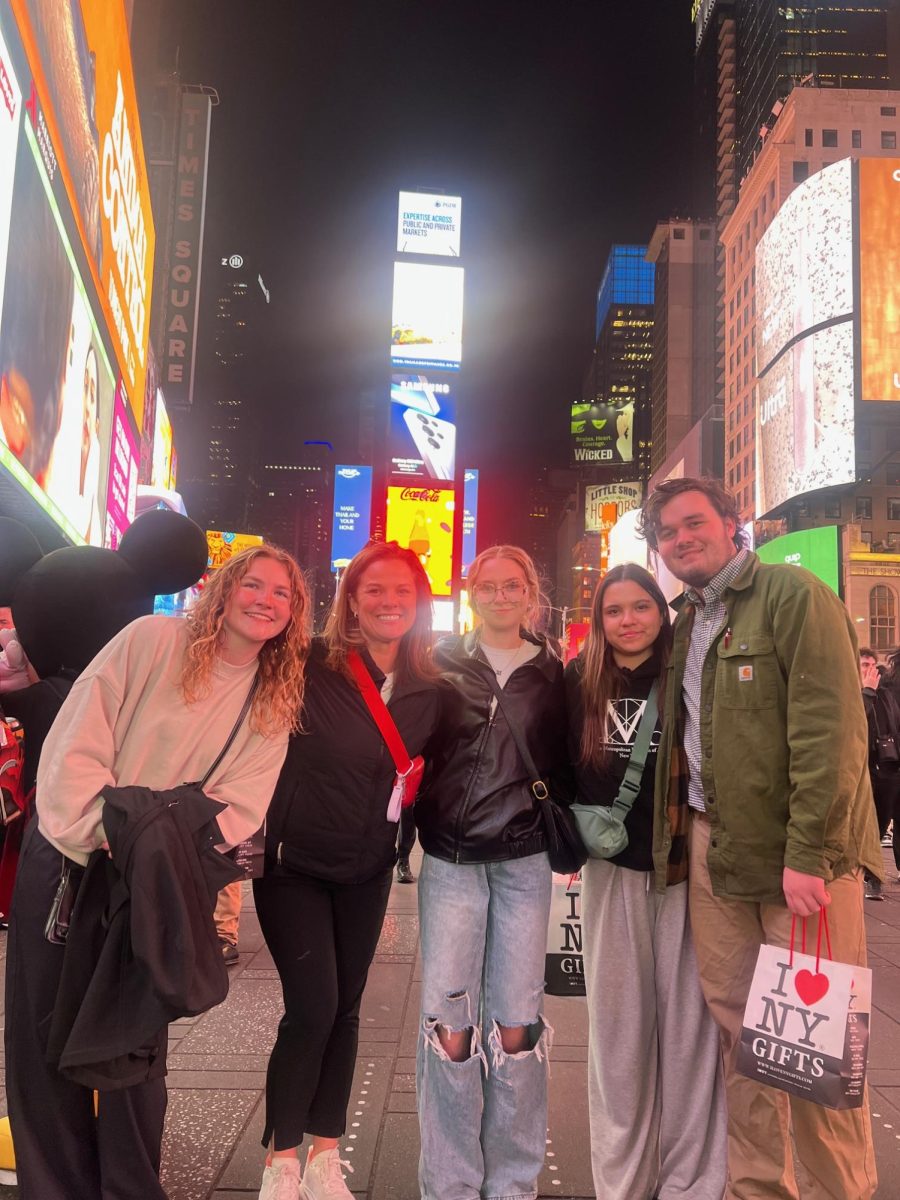The Associated Press
Washington Missourian, Dec. 27:
“The Kansas Miracle?”
We hope Missouri lawmakers are keeping a watchful eye on their counterparts on our western border.
Kansas has been in the news a lot lately mostly as an example of what not to do relative to tax policy.
But just a few years ago, many Missouri legislators were heralding Kansas Gov. Sam Brownback’s aggressive tax-cutting agenda as something the Show-me State should emulate lest we get left behind in the quixotic battle for new jobs.
Back then Brownback was admired by Republicans across the country and his tea party-inspired policies were cited as a model example of what conservative governance nationwide could look like.
Brownback, aided and abetted by a Republican Legislature, was successful in making Kansas a testing ground for conservative principles, including cutting funding for some public education and the eventual elimination of the state’s income tax. Critics called it a risky experiment while adoring supporters dubbed it “The Kansas Miracle.”
In 2012, Brownback gamely predicted that his new “pro-growth” tax cutting polices would be “like a shot of adrenaline into the heart of the Kansas economy,” and would “pave the way to the creation of tens of thousands of new jobs, bring tens of thousands of people to Kansas, and help make our state the best place in America to start and grow a small business.”
So far it hasn’t worked. Kansas’ state budget is running a huge deficit and now even Republicans admit Brownback’s freewheeling tax cutting went too far, too fast.
Brownback’s response to critics is that it’s still early — give the tax cuts some time and they will eventually work. While it’s true it has only been about two years since the first phase of his tax cuts went into effect on Jan. 1, 2013, the immediate effect has been to blow a $279 million hole in the state’s budget without noticeable economic growth, according to news reports.
The budget shortfall is expected to grow to over $800 million in the coming years unless the state’s economy picks up or unless the Legislature reverses some of those tax cuts. Meanwhile, the state’s bond rating has been downgraded and its job growth is below the national average.
Brownback’s tax cuts proved problematic in his re-election bid in November and nearly cost him a second term. Now he is scrambling to find ways to divert revenues from other funds to help keep general government programs running.
We hope our state’s lawmakers are paying close attention to Kansas as they prepare for the next legislative session which begins in a few weeks. Tax cuts have been a staple of the Republican agenda for as along as we can remember and some measures that have passed have been appropriate and welcome.
But we hope legislators approach any tax cuts with a degree of caution and restraint. Missouri already is a low tax state that spends less than most other states on education and is in need of major transportation infrastructure improvements.
The Kansas Miracle has been devastating for Kansas. It is an example of how you can really screw things up by cutting taxes too far, too fast.
_____
Jefferson City News-Tribune, Dec. 26:
Restorative Justice Produces
Restorative justice is designed to create goods and services, as well as change in the hearts and minds of criminal offenders.
Good and services are measurable. Although changes in people may be more difficult to quantify, improvements in attitudes and behavior will be evident.
Restorative Justice programs operated by the Missouri Department of Corrections are growing, both literally and figuratively.
The agency reported recently that its Restorative Justice Garden Program set a record for 2014 by donating 180 tons of fresh produce to local food pantries, shelters, churches, nursing homes and school districts throughout Missouri.
The total marks the third consecutive year the garden program has set a record for donations.
George A. Lombardi, agency director, described the program as one “where offenders learn about compassion and altruistic behavior, which is something that many of them lack. These programs also provide offenders a means for them to repay their debt to their communities by giving something back.”
The program operates without the use of tax dollars and participants grow a variety of produce at 19 of the 20 adult institutions and three of the community supervision centers of the Division of Probation and Parole.
The produce is welcome, both for quality and quantity. Tom Pridemore, development manager for the Food Bank for Central and Northeast Missouri, said: “Two years ago, the Food Bank set an ambitious goal that 25 percent of the food that we distribute be in the form of fresh fruits and vegetables. We’re still working toward reaching that lofty goal, and significant donations like the large amount of fresh produce from JCCC help in a big way.”
The garden program is a significant program, but only one of many within the Restorative Justice initiative.
Offenders also make quilts, wooden toys, coloring books, educational materials, posters, birdhouses, PET carts for the disabled, and more. They also refurbish bicycles and take part in various sewing and woodworking projects.
Beneficiaries include Meals on Wheels, Habitat for Humanity, Salvation Army, children’s hospitals, senior citizen homes, schools, KidSmart, Newborns in Need, Parents of Murdered Children, Bikes for Tots, Head Start, Boys and Girls Club, VA hospitals, homeless shelters, and others.
The creation of products and services, including 180 tons of donated produce, are commendable; the program’s restorative change among offenders is even more so.
_____
The Columbia Daily Tribune, Dec. 27
Too Many Guns?
In my late teens and early adulthood as I learned how to drive, fatal encounters with police were an extreme rarity. When we got pulled over by a cop, a certain amount of minor terror ran through our veins, but only because we wondered what we had “done wrong” and what sort of penalty we would receive. Police officers always had to be wary, but very few subjects were carrying lethal weapons. Certainly not guns.
Now the situation is entirely different. Conceal-carry is the law of the land. Anecdotal stories indicate law-abiding citizens are secretly carrying guns in far greater numbers than many of us imagine. People in positions to know say perhaps a third of members of the Missouri General Assembly show up for work armed with loaded pistols.
Every time an officer stops a suspect on the street, the cop must prepare for the growing likelihood the suspect is armed. Carrying “heat” is the thing to do these days for far too many ordinary citizens. Too many police officers are poised for a quick draw.
A new industry trains people how to act when pulled over, particularly for “driving while black.” There’s an app for that.
Essentially the lesson is to remain calm, keep hands on the wheel, be respectful and make no false moves. Nothing new here, but for many young black men suffused with suspicion and anger aimed at police and believing their ethnic group is mistreated, potentially deadly trouble is at hand.
A proliferation of guns makes the situation more volatile than at any time since the real Wild West.
I’m convinced carrying a concealed weapon does not make a person safer. The chances are slight an amateur will fare well in an armed conflict. The amateur might have learned how to work the piece in a training session but will not be likely to match the criminal in deadly instinct and intent. Perhaps the most dangerous thing a conceal-carrier can do is try to whip out a gun when confronted with a potential assailant.
The gun culture is firmly embedded in this country. We will no time soon adopt the mindset prevalent in most civilized societies where few people carry guns. Laws in those countries reflect an attitude of the populace not present here. We have to learn to live with guns, everywhere.
Black youths in gangs carrying guns are the most vulnerable members of society. Too often they will be killed early and unjustifiably, occasionally by police officers, almost always in circumstances they, themselves, could have avoided.
_____
Kansas City Star, Dec. 29
Kansas City Crime
The No. 1 story about crime in 2014 in Kansas City has been the dramatic drop in murders.
They have fallen from 100 a year ago to only 76 through noon Sunday. That’s a significant victory for the police, prosecutors, federal officials and many others battling the city’s unacceptable homicide rate. It was fourth highest among the nation’s 50 largest cities in 2013.
The plunging number of murders has reduced the damage they do to crime-ridden neighborhoods, especially in creating a sense of fear on the streets.
Looking ahead to 2015, leaders of anti-murder programs must keep the momentum going.
It’s particularly crucial for mayoral and City Council candidates in the upcoming campaign season to provide their specific ideas on how to improve the situation. Voters want to see serious solutions discussed.
The city cannot rest on its laurels. Look at just a decade ago, when murders tumbled to 82 in 2003 before climbing a bit to 89 in 2004. Then they jumped a startling 40 percent in 2005.
One of the most essential actions needed in 2015 is to adequately finance and remain committed to the No Violence Alliance. The collaborative and focused deterrence program puts pressure on criminals, their families and their friends to avoid violence.
Officials identify the people most likely to commit violent crimes, then intervene with social services to help them get jobs, an education or other assistance. But police must continue to arrest and prosecute those who persist in a life of crime.
Police Chief Darryl Forté, Mayor Sly James and Jackson County Prosecutor Jean Peters Baker have become the public faces of the program, along with U.S. Attorney Tammy Dickinson.
In recent interviews, James and Forté vowed to make it stronger than ever.
“We’re in this for the long run,” James said, properly saying the alliance must be set up to survive future changes in political and law enforcement leaders.
Forté said he wanted the group to be “ingrained” in the Police Department, so officers are even more committed to its mission. The chief also praised increased cooperation from residents in solving violent crimes.
Other programs that appear to have helped reduce murders in 2014 must be evaluated and upgraded in 2015.
They include Aim4Peace, which is at work in several high-crime areas. The program offers help to people who, according to Aim4Peace advocates, have a disease that comes out in learned criminal behavior from parents or friends. In 2015, program supporters will need to provide further proof that it’s really making a difference.
Jackson County’s COMBAT program has funded the Anti-Violence Special Initiative with more than $550,000 this year. It includes 16 plans, such as one that helps ex-offenders stay away from crime after returning home. The county must determine which plans deserve renewed funding in 2015.
Another organization — Mothers in Charge — would love to add no new members in 2015. Sadly, that’s an impossible goal as long as mothers continue to lose children to homicides. The women provide valuable services, using their stories to try to prevent future violence.
Positive news occurred on the city’s murder front in 2014. Residents deserve to benefit from even more progress in 2015.
We hope Missouri lawmakers are keeping a watchful eye on their counterparts on our western border.
Kansas has been in the news a lot lately mostly as an example of what not to do relative to tax policy.
But just a few years ago, many Missouri legislators were heralding Kansas Gov. Sam Brownback’s aggressive tax-cutting agenda as something the Show-me State should emulate lest we get left behind in the quixotic battle for new jobs.
Back then Brownback was admired by Republicans across the country and his tea party-inspired policies were cited as a model example of what conservative governance nationwide could look like.
Brownback, aided and abetted by a Republican Legislature, was successful in making Kansas a testing ground for conservative principles, including cutting funding for some public education and the eventual elimination of the state’s income tax. Critics called it a risky experiment while adoring supporters dubbed it “The Kansas Miracle.”
In 2012, Brownback gamely predicted that his new “pro-growth” tax cutting polices would be “like a shot of adrenaline into the heart of the Kansas economy,” and would “pave the way to the creation of tens of thousands of new jobs, bring tens of thousands of people to Kansas, and help make our state the best place in America to start and grow a small business.”
So far it hasn’t worked. Kansas’ state budget is running a huge deficit and now even Republicans admit Brownback’s freewheeling tax cutting went too far, too fast.
Brownback’s response to critics is that it’s still early — give the tax cuts some time and they will eventually work. While it’s true it has only been about two years since the first phase of his tax cuts went into effect on Jan. 1, 2013, the immediate effect has been to blow a $279 million hole in the state’s budget without noticeable economic growth, according to news reports.
The budget shortfall is expected to grow to over $800 million in the coming years unless the state’s economy picks up or unless the Legislature reverses some of those tax cuts. Meanwhile, the state’s bond rating has been downgraded and its job growth is below the national average.
Brownback’s tax cuts proved problematic in his re-election bid in November and nearly cost him a second term. Now he is scrambling to find ways to divert revenues from other funds to help keep general government programs running.
We hope our state’s lawmakers are paying close attention to Kansas as they prepare for the next legislative session which begins in a few weeks. Tax cuts have been a staple of the Republican agenda for as along as we can remember and some measures that have passed have been appropriate and welcome.
But we hope legislators approach any tax cuts with a degree of caution and restraint. Missouri already is a low tax state that spends less than most other states on education and is in need of major transportation infrastructure improvements.
The Kansas Miracle has been devastating for Kansas. It is an example of how you can really screw things up by cutting taxes too far, too fast.
_____
Jefferson City News-Tribune, Dec. 26:
Restorative Justice Produces
Restorative justice is designed to create goods and services, as well as change in the hearts and minds of criminal offenders.
Good and services are measurable. Although changes in people may be more difficult to quantify, improvements in attitudes and behavior will be evident.
Restorative Justice programs operated by the Missouri Department of Corrections are growing, both literally and figuratively.
The agency reported recently that its Restorative Justice Garden Program set a record for 2014 by donating 180 tons of fresh produce to local food pantries, shelters, churches, nursing homes and school districts throughout Missouri.
The total marks the third consecutive year the garden program has set a record for donations.
George A. Lombardi, agency director, described the program as one “where offenders learn about compassion and altruistic behavior, which is something that many of them lack. These programs also provide offenders a means for them to repay their debt to their communities by giving something back.”
The program operates without the use of tax dollars and participants grow a variety of produce at 19 of the 20 adult institutions and three of the community supervision centers of the Division of Probation and Parole.
The produce is welcome, both for quality and quantity. Tom Pridemore, development manager for the Food Bank for Central and Northeast Missouri, said: “Two years ago, the Food Bank set an ambitious goal that 25 percent of the food that we distribute be in the form of fresh fruits and vegetables. We’re still working toward reaching that lofty goal, and significant donations like the large amount of fresh produce from JCCC help in a big way.”
The garden program is a significant program, but only one of many within the Restorative Justice initiative.
Offenders also make quilts, wooden toys, coloring books, educational materials, posters, birdhouses, PET carts for the disabled, and more. They also refurbish bicycles and take part in various sewing and woodworking projects.
Beneficiaries include Meals on Wheels, Habitat for Humanity, Salvation Army, children’s hospitals, senior citizen homes, schools, KidSmart, Newborns in Need, Parents of Murdered Children, Bikes for Tots, Head Start, Boys and Girls Club, VA hospitals, homeless shelters, and others.
The creation of products and services, including 180 tons of donated produce, are commendable; the program’s restorative change among offenders is even more so.
_____
The Columbia Daily Tribune, Dec. 27
Too Many Guns?
In my late teens and early adulthood as I learned how to drive, fatal encounters with police were an extreme rarity. When we got pulled over by a cop, a certain amount of minor terror ran through our veins, but only because we wondered what we had “done wrong” and what sort of penalty we would receive. Police officers always had to be wary, but very few subjects were carrying lethal weapons. Certainly not guns.
Now the situation is entirely different. Conceal-carry is the law of the land. Anecdotal stories indicate law-abiding citizens are secretly carrying guns in far greater numbers than many of us imagine. People in positions to know say perhaps a third of members of the Missouri General Assembly show up for work armed with loaded pistols.
Every time an officer stops a suspect on the street, the cop must prepare for the growing likelihood the suspect is armed. Carrying “heat” is the thing to do these days for far too many ordinary citizens. Too many police officers are poised for a quick draw.
A new industry trains people how to act when pulled over, particularly for “driving while black.” There’s an app for that.
Essentially the lesson is to remain calm, keep hands on the wheel, be respectful and make no false moves. Nothing new here, but for many young black men suffused with suspicion and anger aimed at police and believing their ethnic group is mistreated, potentially deadly trouble is at hand.
A proliferation of guns makes the situation more volatile than at any time since the real Wild West.
I’m convinced carrying a concealed weapon does not make a person safer. The chances are slight an amateur will fare well in an armed conflict. The amateur might have learned how to work the piece in a training session but will not be likely to match the criminal in deadly instinct and intent. Perhaps the most dangerous thing a conceal-carrier can do is try to whip out a gun when confronted with a potential assailant.
The gun culture is firmly embedded in this country. We will no time soon adopt the mindset prevalent in most civilized societies where few people carry guns. Laws in those countries reflect an attitude of the populace not present here. We have to learn to live with guns, everywhere.
Black youths in gangs carrying guns are the most vulnerable members of society. Too often they will be killed early and unjustifiably, occasionally by police officers, almost always in circumstances they, themselves, could have avoided.
_____
Kansas City Star, Dec. 29
Kansas City Crime
The No. 1 story about crime in 2014 in Kansas City has been the dramatic drop in murders.
They have fallen from 100 a year ago to only 76 through noon Sunday. That’s a significant victory for the police, prosecutors, federal officials and many others battling the city’s unacceptable homicide rate. It was fourth highest among the nation’s 50 largest cities in 2013.
The plunging number of murders has reduced the damage they do to crime-ridden neighborhoods, especially in creating a sense of fear on the streets.
Looking ahead to 2015, leaders of anti-murder programs must keep the momentum going.
It’s particularly crucial for mayoral and City Council candidates in the upcoming campaign season to provide their specific ideas on how to improve the situation. Voters want to see serious solutions discussed.
The city cannot rest on its laurels. Look at just a decade ago, when murders tumbled to 82 in 2003 before climbing a bit to 89 in 2004. Then they jumped a startling 40 percent in 2005.
One of the most essential actions needed in 2015 is to adequately finance and remain committed to the No Violence Alliance. The collaborative and focused deterrence program puts pressure on criminals, their families and their friends to avoid violence.
Officials identify the people most likely to commit violent crimes, then intervene with social services to help them get jobs, an education or other assistance. But police must continue to arrest and prosecute those who persist in a life of crime.
Police Chief Darryl Forté, Mayor Sly James and Jackson County Prosecutor Jean Peters Baker have become the public faces of the program, along with U.S. Attorney Tammy Dickinson.
In recent interviews, James and Forté vowed to make it stronger than ever.
“We’re in this for the long run,” James said, properly saying the alliance must be set up to survive future changes in political and law enforcement leaders.
Forté said he wanted the group to be “ingrained” in the Police Department, so officers are even more committed to its mission. The chief also praised increased cooperation from residents in solving violent crimes.
Other programs that appear to have helped reduce murders in 2014 must be evaluated and upgraded in 2015.
They include Aim4Peace, which is at work in several high-crime areas. The program offers help to people who, according to Aim4Peace advocates, have a disease that comes out in learned criminal behavior from parents or friends. In 2015, program supporters will need to provide further proof that it’s really making a difference.
Jackson County’s COMBAT program has funded the Anti-Violence Special Initiative with more than $550,000 this year. It includes 16 plans, such as one that helps ex-offenders stay away from crime after returning home. The county must determine which plans deserve renewed funding in 2015.
Another organization — Mothers in Charge — would love to add no new members in 2015. Sadly, that’s an impossible goal as long as mothers continue to lose children to homicides. The women provide valuable services, using their stories to try to prevent future violence.
Positive news occurred on the city’s murder front in 2014. Residents deserve to benefit from even more progress in 2015.






